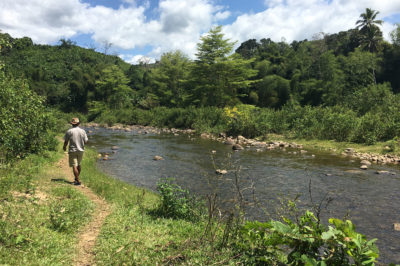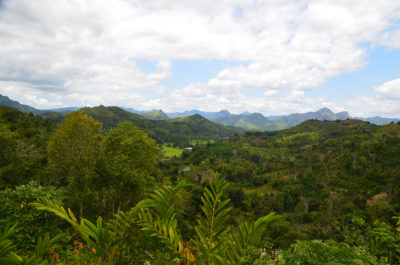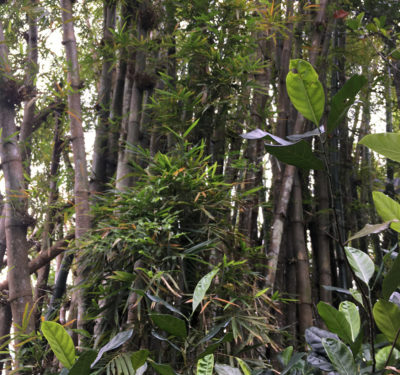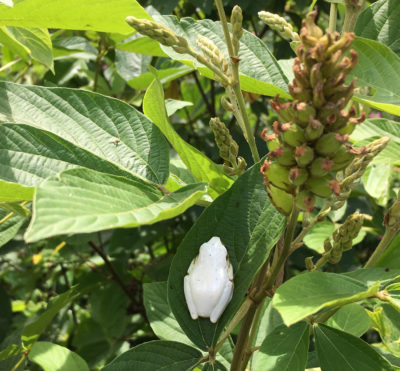In October 2018, I visited the SAVA region of northeast Madagascar for two weeks. My goals: 1) hike in Marojejy, 2) see the rare silky sifakas, 3) learn about local reserves in the area, and 4) learn about the Lemur Conservation Foundation (LCF)’s work in this region. More blog posts in this series:
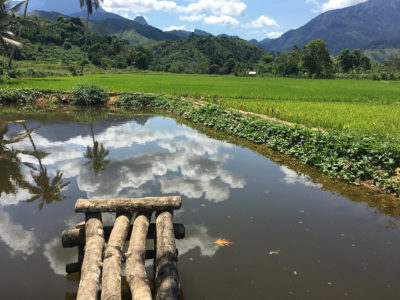
The Villages Outside of Marojejy National Park
On the way to and from Marojejy National Park, hikers walk along a rolling dirt road through two villages.
You pass a library, two fish ponds, and a bridge which joins the villages — all supported by the Lemur Conservation Foundation. The bridge allows children to get to school without crossing the river on foot, and the fish ponds provide a renewable source of protein and nourishment for the villagers.
Meet Jackson
An Expert Marojejy Guide, Carpenter, and Steward of the Land
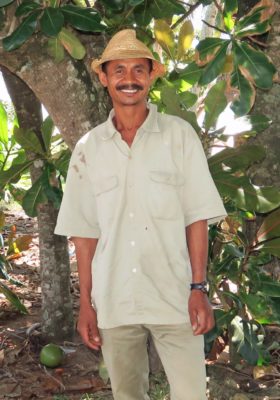
I hear about Lemur Conservation Foundation’s work in the area from my guide, Jackson — Mr. Jacques Harison Tonkasina. Jackson regularly works with Dr. Erik Patel of LCF and is not only a very accomplished guide, but also an outstanding carpenter who led the construction team that completed repairs to the kitchen and dining area at Marojejy Camp 1.
Jackson has a big smile and a friendly, approachable personality. He lives in this village of Manantenina with his wife and kids. His work as a guide means he has one of the nicest houses in the village!
As we walk through town, Jackson is greeted with smiles and waves and handshakes from passersby of all ages. One man is learning english, and greets me with a smile, “Hello! How are you? You are American!”.
Visiting Jackson’s Reserve: Agnolakely
Jackson is the proud owner of Agnolakely Reserve, a 3.78 hectare area of forested land in Manantenina that he has purchased with money he earned as a guide for the SAVA region.
With LCF’s support, the Agnolakely Reserve is thriving. Jackson grows seedlings in the nursery and plants native trees including rosewood. Tourists have started to visit; here they can see northern bamboo lemurs, chameleons, frogs, and other animals, along with beautiful vistas of the green, hilly countryside surrounding Marojejy.
Getting to Agnolakely
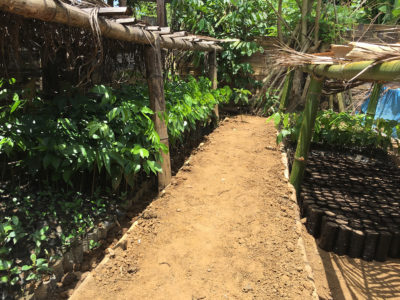
Walking through the village, we arrive at the bridge when Jackson and I veer right towards the river. We take off our boots and cross the river on foot; it’s only a few inches deep and about 100 feet wide at this spot. After crossing the river, we meander along the edge and up through short plants until we reach Agnolakely’s nursery. We continue walking to a patch of bamboo, hoping to spot bamboo lemurs, but they must be napping deep in the bamboo this warm afternoon.
Jackson shows me some newly planted rosewood trees and bamboo, as well as some vanilla growing in this low forest. He explains that he has an arrangement with a local woman who owns the vanilla plants; she will continue to harvest the vanilla for the next couple of seasons. And then, the land will be Jackson’s to reforest.
Jackson’s Dream
Buying Neighboring Farmland to Grow the Reserve and Reforest Damaged Land
We get to the far edge of Agnolakely and Jackson points to a neighboring parcel of land:
I dream of buying this neighboring land to add to the reserve, but the owner wants too much money. Once I called my land a reserve, she thought she could charge more for it and now it’s too expensive! I will have to save up to get this land.”
This land has been slashed and burned and now grows nothing, but Jackson knows he can turn it around so it thrives once again. I have no doubt he can. There is so much hope in hearing Jackson’s passion for his land and for the plants and animals that also call it home.
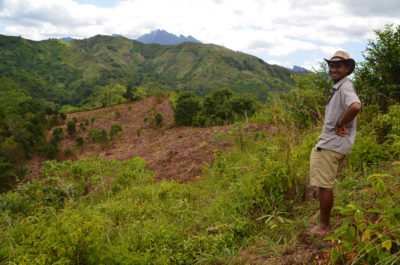
Update: The Lemur Conservation Foundation Helps Jackson Grow Agnolakely Reserve
The Lemur Conservation Foundation, readers of this post, and other supporters of LCF raised enough funds to increase the size of Agnolakely and help Jackson bring this land back from the destruction of slash and burn!
Visit or Support the Reserve
To visit the reserve, contact Jackson or Mr. Jean Chrys at the phone numbers below. To financially support the reserve, contact the Lemur Conservation Foundation, as they provide all funding for reforestation at this site.
- Jackson, Owner
- Phone: 032 47 250 37
- Mr. Jean Chrys, Lead Pepinierist of the Nursery
- Phone: 032 89 831 66

